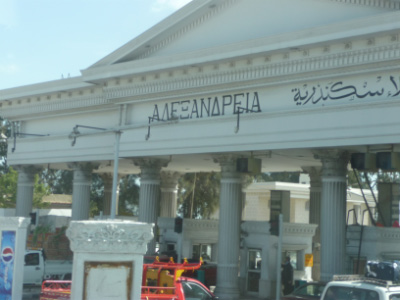 |
|
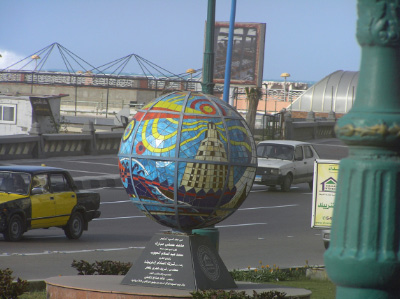 |
Our final stop in Egypt was Alexandria. Where the rest of Egypt touted its pharonic roots, Alexandria, founded by Alexander the Great, is resolutely Greek. |
|
As the major seaport in Egypt, Alexandria has a multicultural air and a tradition of exploration and innovation.
|
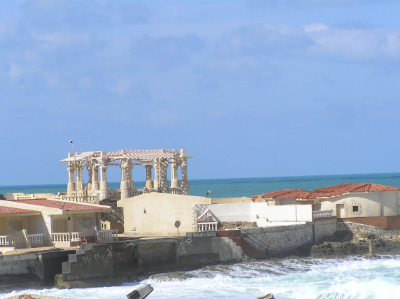 |
|
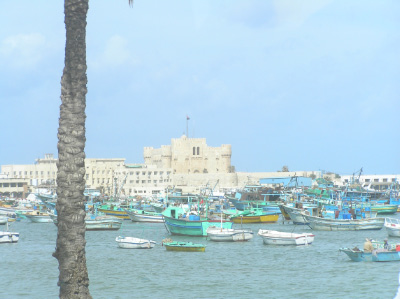 |
Even the architecture of the summer houses (it is THE place for Egyptians to spend the summer) look more Mediterranean than Egyptian. |
|
Alexandria has a flourishing deep-sea fishing fleet and a wonderful harbor.
|
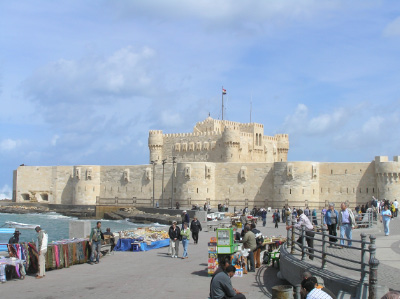 |
|
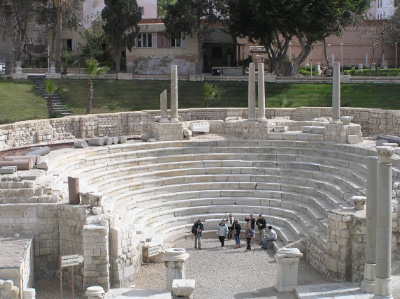 |
The Pharos lighthouse, one of the Seven Wonders of the Ancient World, stood on this point where there is now a medieval fortress.
|
|
Like any good Greco-Roman city, Alexandria had a theater, although a rather small one, considering that the city was one of the largest in the Roman Empire.
|
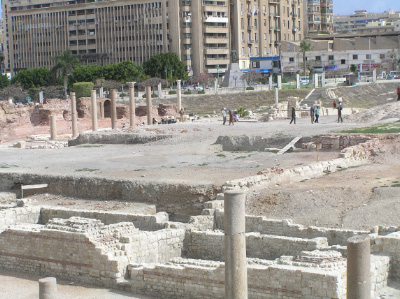 |
|
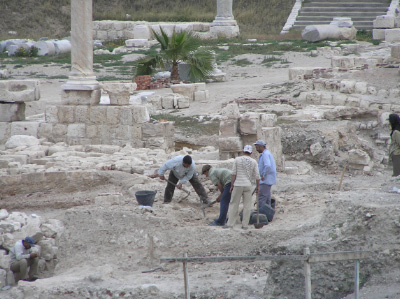 |
The public baths are still under excavation. We watched the workmen carry away bags of dirt and stones and we have never seen people move as SLOWLY as they did. They were not being careful or meticulous--just slow.
|
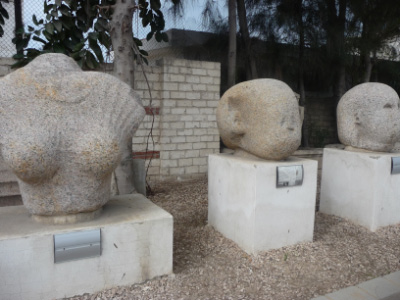 |
|
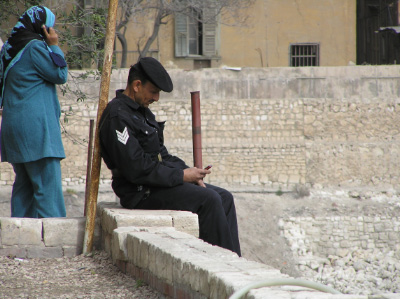 |
Much of ancient Alexandria is now underwater so undersea archaeology is important there, even though the artifacts that are found tend to be in poor shape. |
|
Clearly this guard did not think that they were worth very careful watching.
|
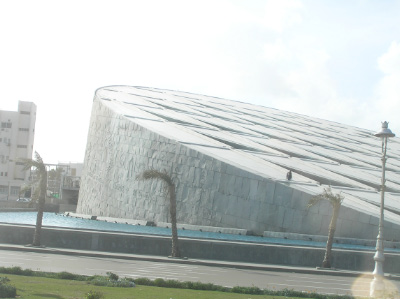 |
|
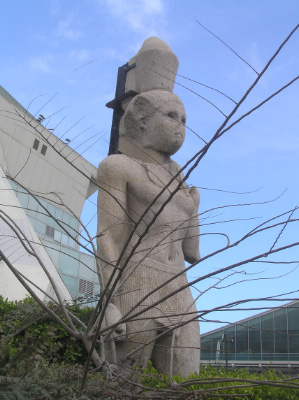 |
The glory of ancient Alexandria was the Library and the high point of modern Alexandria is the new Library, a disc rising from the water.
|
|
Outside of the Library is a statue of Ptolemy II, the founder of the original Library. The statue was fished out of the Mediterranean.
|
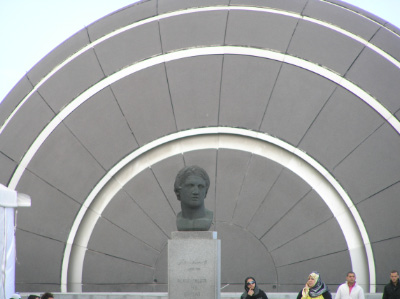 |
|
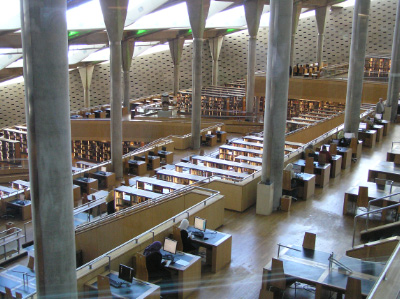 |
In honor of the founder of the city: the head of Alexander the Great in the courtyard. |
|
The Reading Room of the Library is breathtaking.
|
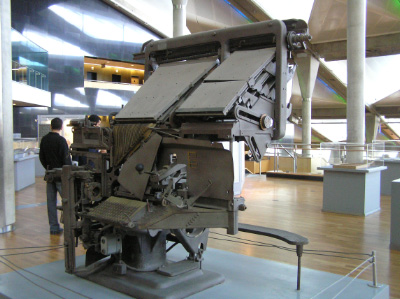 |
|
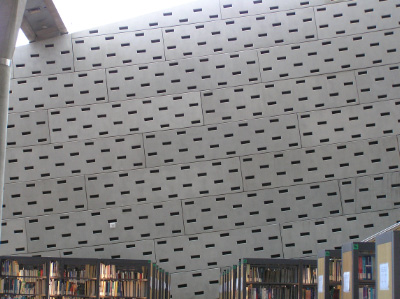 |
There is a display of printing presses from some of the earliest ones to an ultra-modern high-speed printer/binder that creates single copies of books on demand.
|
|
The interesting honeycomb effect on the walls recalls the slots in which scrolls were kept in the original Library while providing sound-deadening properties.
|
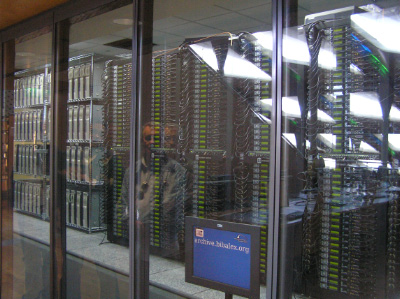 |
|
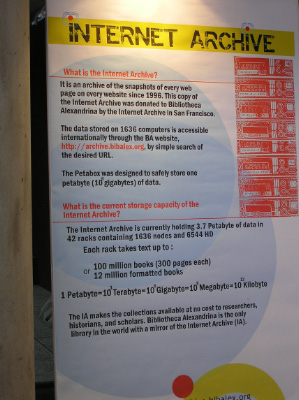 |
The Library has one of the two Internet Archives in the world. Every web page that has existed since 1996 is archived here, even if it no longer exists. It is public; go to http://archive.bibalex.org to use the "Wayback" machine to see pages from the past.
|
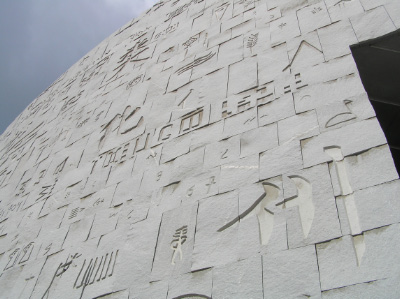 |
|
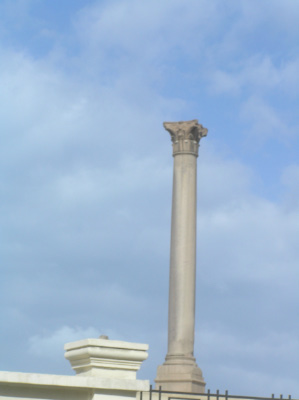 |
The outside of the building is covered in characters from writing systems, ancient and modern, from around the world.
|
|
The 90-foot Pompey's Pillar stands in the middle of a residential district. It has nothing to do with Pompey (or Cleopatra); it was erected in honor of the Roman emperor Diocletian around 300 AD.
|
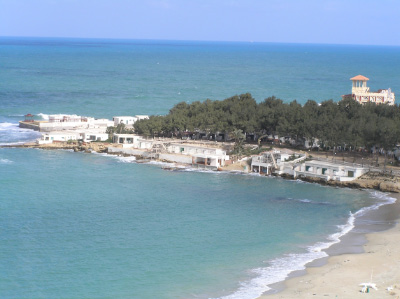 |
|
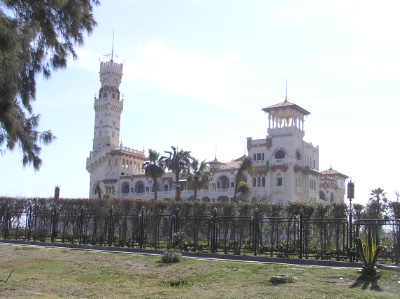 |
Alexandria is a major resort and a look at the Mediterranean coast tells you why. We had a good view from our hotel room although it was too cold to go sit on the beach.
|
|
Near our hotel was the park of Montazah Palace. Although the Palace itself is not open to the public, the grounds are a favorite place for locals to wander.
|
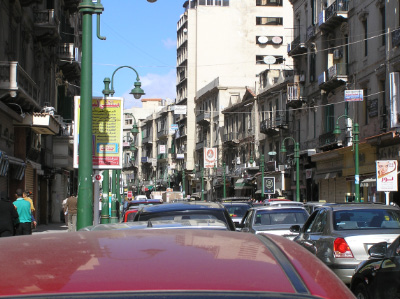 |
|
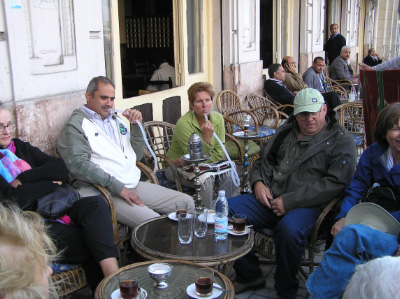 |
Like Cairo, Alexandria has its share of huge traffic jams and a wonderful disregard for traffic lights. The streets are narrow, though, so getting across a street is not as difficult.
|
|
We walked around Alexandria a little and enjoyed the cosmopolitan atmosphere. Others of our group, including Ehab, relaxed with a traditional water pipe in a cafe. [They insisted that it was tobacco. . .]
|
























